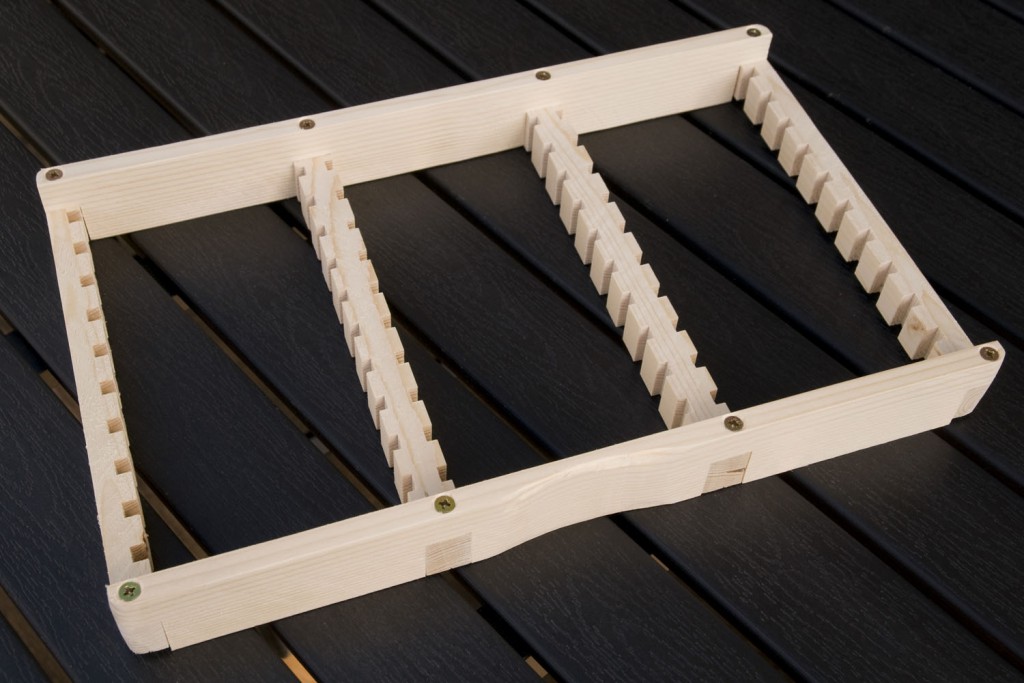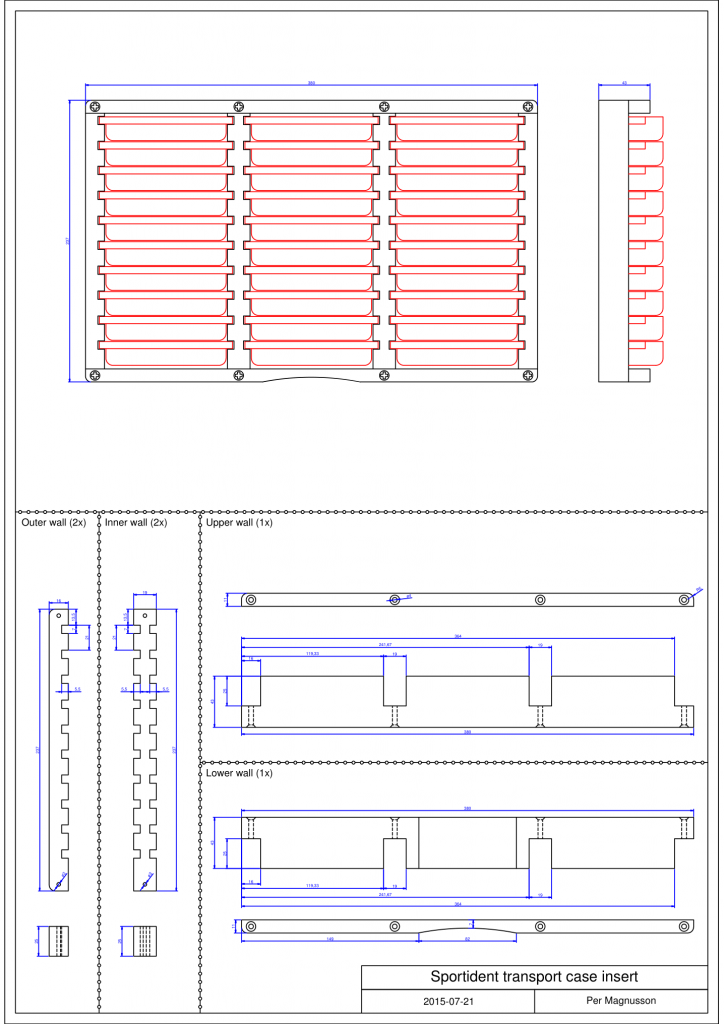To better organize Sportident control stations in their transport cases, I designed and built a couple of wooden case inserts. These inserts allow 30 stations to fit in one case while each station has a fixed position that can also be labeled. This makes it very easy to see if any station is missing and if so, which station has disappeared.
This is what the case insert looks like on its own and when fitted into a transport case and equipped with 30 base stations.


I made a drawing with dimensions of the insert. It can be found below in PNG, PDF and DWG format.

 The drawing as a PDF
The drawing as a PDF
Looks good! Don’t forget you’re supposed to store stations in alternate orientation (NOT “hole-on-hole”) to avoid the stations talking to each other and keeping them from sleeping… (see https://www.sportident.com/images/PDF/6_si_information_technical/5_Storage_BSF8/storage_and_transport_en.pdf )
Thanks for that tip. I was not aware of it. Can sleeping stations really wake up if they are stored hole-to-hole? Or what is the issue? Increased power consumption due to one station contemplating the beacon signal from the next station? I do not think I have observed some bad effects of storing stations hole-to-hole, but I have not looked for it either.
The PDF I linked above has been around since 2005 (updated to current SI design in 2015 according to PDF metadata).
There are old rumours about really old 5.xx firmware having problems with stations “keeping each other awake” and thus having undesirably fast battery depletion. I’m not sure it would even have been visible, the LCD probably stayed off, but the “chip inserted?”-query of one station would have “woken” another station, which would have listened for a chip and then gone to sleep again, but even that listening would be more consumption than desired.
My feeling is that especially with the new Air+ BC-modes, one would want to make sure the stations are stored according to the recommendations, and also switched off (with OFF-chip) before being put into storage (not just left to “go to sleep after active time ends), to make sure the stations are already in sleep mode and stay that way.
Maybe I should do some experiments and measure the current consumption when a station is sleeping alone vs when it is sleeping close to another sleeping station. It would be good to quantify how bad it is to have stations next to each other since I think it will be quite a bit of work to inform all the users that they need to think of this.
I do not see any plans to use Air+ in the near future for the normal orienteering events that these stations are typically used for, so that particular thing is not a concern for me.
Per